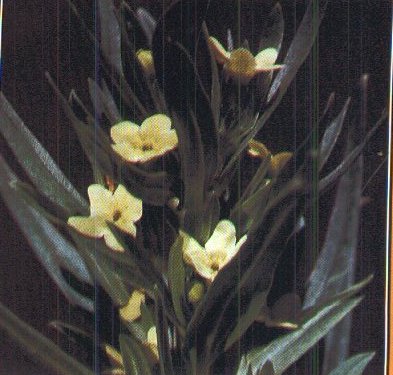
Thyme buckwheat - David Hagen |

Goldenweed - Jim Farrell |
| ages. Blooming from early spring into late
summer, depending on the species, desert buckwheats provide an important
nectar source for shrub-steppe bees and butterflies. The seeds of desert
buckwheats are a favorite food for many birds and rodents.
It's easy to forget the importance of plants in our lives. The approach to the Douglas Creek-South Watchable Wildflowers site takes you past fields of cultivated crops: orchards, alfalfa, and wheat. Where the land is more rugged, stock animals graze. an integral part of our lives, plants are vital for basic human activities like washing and eating, shelter, medicine, and clothing. Humans have been recording the history of plant uses since early times. Expeditions to uncharted lands usually included botanists. Until recently, doctors of western medicine studied botany, because plants were the only source of ingredients for the most effective treatments. Enjoying the beauty of wildflowers is just one of many reasons why protecting native plant species benefits us all.
|
Puccoon - Joe Duff
|
